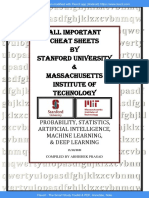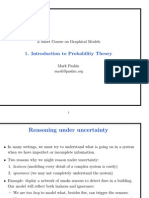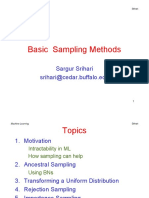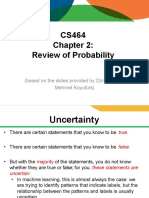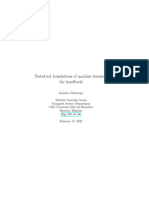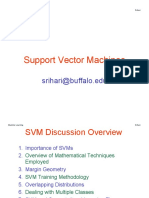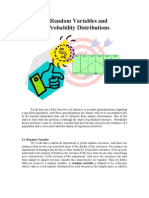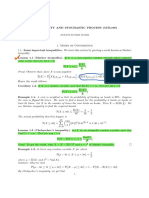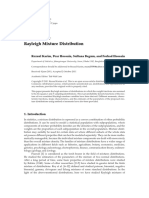0% found this document useful (0 votes)
143 views49 pagesProbability Theory: Sargur N. Srihari Srihari@cedar - Buffalo.edu
1) Probability theory provides a framework for dealing with uncertainty in machine learning.
2) Key concepts include random variables, probability distributions, marginal, conditional, and joint probabilities.
3) The sum and product rules relate these probabilities, and Bayes' theorem updates probabilities based on new information.
Uploaded by
asdfasdffdsaCopyright
© © All Rights Reserved
We take content rights seriously. If you suspect this is your content, claim it here.
Available Formats
Download as PDF, TXT or read online on Scribd
0% found this document useful (0 votes)
143 views49 pagesProbability Theory: Sargur N. Srihari Srihari@cedar - Buffalo.edu
1) Probability theory provides a framework for dealing with uncertainty in machine learning.
2) Key concepts include random variables, probability distributions, marginal, conditional, and joint probabilities.
3) The sum and product rules relate these probabilities, and Bayes' theorem updates probabilities based on new information.
Uploaded by
asdfasdffdsaCopyright
© © All Rights Reserved
We take content rights seriously. If you suspect this is your content, claim it here.
Available Formats
Download as PDF, TXT or read online on Scribd
/ 49










